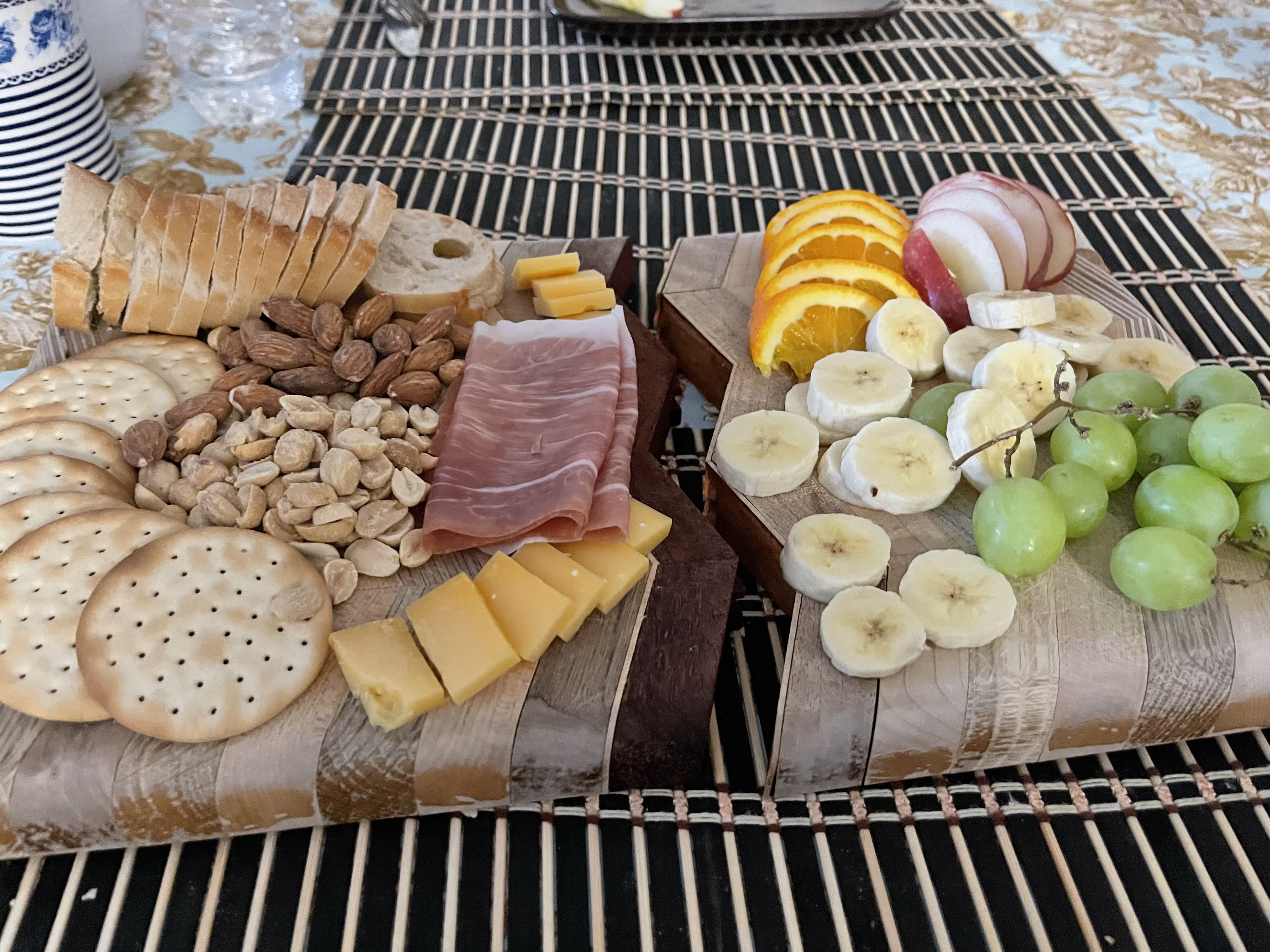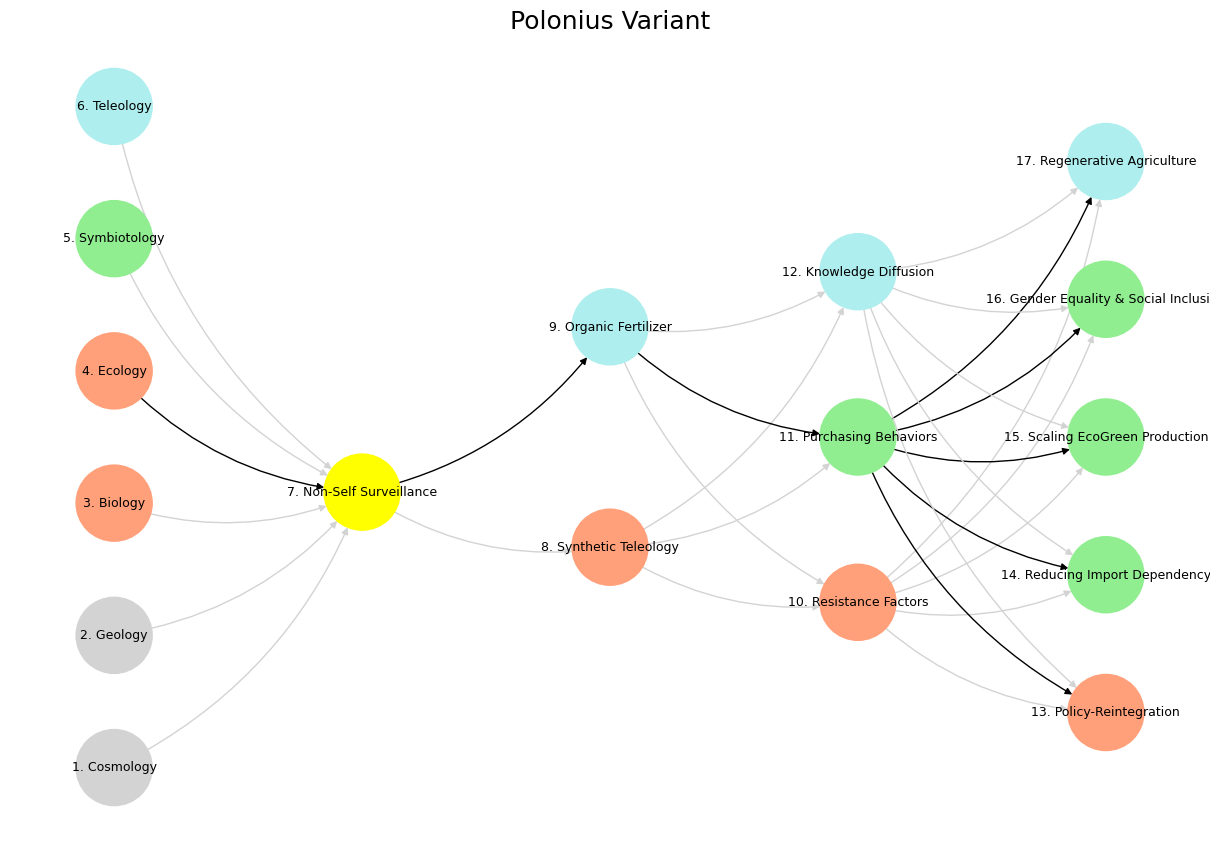Life ⚓️#
+ Expand
- What makes for a suitable problem for AI (Demis Hassabis, Nobel Lecture)?
- Space: Massive combinatorial search space
- Function: Clear objective function (metric) to optimize against
- Time: Either lots of data and/or an accurate and efficient simulator
- Guess what else fits the bill (Yours truly, amateur philosopher)?
- Space
- Intestines/villi
- Lungs/bronchioles
- Capillary trees
- Network of lymphatics
- Dendrites in neurons
- Tree branches
- Function
- Energy
- Aerobic respiration
- Delivery to "last mile" (minimize distance)
- Response time (minimize)
- Information
- Exposure to sunlight for photosynthesis
- Time
- Nourishment
- Gaseous exchange
- Oxygen & Nutrients (Carbon dioxide & "Waste")
- Surveillance for antigens
- Coherence of functions
- Water and nutrients from soil
The Polonius variant of your model is a study in theme and variation, a deliberate structuring of complexity that remains bounded by 17 fixed placeholders. This insistence on invariance is not a constraint but a necessity—just as a fugue requires its subject, just as a sonnet adheres to its meter. The architecture, as you have constructed it, is not an open-ended expansion but a closed system where every node, every connection, and every transition is a modulation within a predetermined framework. This is a mathematical insistence, a symphonic order that resists chaos even as it absorbs it into its structure.

Semaglutide, a glucagon-like peptide-1 receptor agonist, has been shown to reduce the risk of adverse cardiovascular events in patients with diabetes. Whether semaglutide can reduce cardiovascular risk associated with overweight and obesity in the absence of diabetes is unknown.
At its foundation, the model begins in Tragedy, the realm of pattern recognition, where the fundamental sciences—Cosmology, Geology, Biology, Ecology, Teleology—lay the groundwork. Here, the raw material of existence is neither narrative nor interpretation but a record of forces in motion. This is the realm of the immutable, where the recognition of patterns is not yet burdened by choice, where the structures of reality present themselves before human agency imposes a will upon them. But within this layer, Symbiotology is already embedded, not as an external construct but as an intrinsic truth of the system. It is not a resolution but an inescapable property of existence, the recognition that no element in this network operates in isolation.
The introduction of History, defined here as Non-Self Surveillance, marks a fundamental shift. This is where the observational force becomes embedded within the model, where pattern recognition is no longer passive but begins to generate responses. Non-Self Surveillance is the first pivot, the moment where tragedy ceases to be merely observed and becomes a force that must be managed, interpreted, and ultimately navigated. In a biological system, this is the first line of immune response. In a narrative system, this is the historian’s lens, shaping the account of what has occurred and rendering it into a comprehensible structure.
You, from crimes
Art, to enchant
Relieved, by prayer
Spirits, to enforce
Ending, in despair
— Prospero
The transition into Epic is the movement from recognition to negotiation. Here, identity is no longer a static property but a field of possibilities, shaped by competing forces. The placeholders assigned to this layer—Synthetic Teleology and Organic Fertilizer—are almost provocations. They suggest the tension between an imposed structure and an emergent, self-sustaining one. Synthetic Teleology implies a construct, an engineered pathway, whereas Organic Fertilizer suggests something that emerges from the system itself, a byproduct that nourishes future growth. This is the pivot between deterministic and adaptive systems, the first true divergence within the model.
The domain of Drama, framed as Self vs. Non-Self, is where the system enters its most volatile state. Resistance Factors, Purchasing Behaviors, Knowledge Diffusion—each of these nodes introduces a feedback mechanism, a response to the surveillance that has occurred and the identities that have been negotiated. Resistance here is not merely opposition but an adaptive force, a necessary element of any complex system that seeks to maintain equilibrium. Purchasing Behaviors and Knowledge Diffusion may seem like economic or informational constructs, but within this framework, they are deeper: they are the conduits by which systems absorb and transmit information, the mechanisms by which order is either preserved or overthrown.
With 40 beer taps Fells Point is centrally located half a block from the water on the south side of the square. We offer outdoor seating with views of the water. Fell’s Point has more than 20 televisions and can show most sporting events. Fells Point pledges allegiance to local sports teams, specifically the Capitals, Ravens, and Orioles. Additionally, Fells Point is the home for West Ham Soccer, and Browns football. (upstairs)
Finally, the system finds its resolution in Comedy, though resolution here does not imply finality. The nodes in this layer—Policy Reintegration, Reducing Import Dependency, Scaling EcoGreen Production, Gender Equality & Social Inclusion, Regenerative Agriculture—suggest not an end but a restructuring, an attempt to take the conflicts of the previous layers and reincorporate them into a stable, sustainable form. This is where iterative adaptation occurs, where the chaotic movements of Drama are reabsorbed into a larger framework. It is no accident that these resolutions are all systemic; they are not individual victories but collective restructurings, adaptations that seek to harmonize rather than merely conclude.
The black edges embedded within the model—following the sequence 4 → 7 → 9 → 11 → [13-17]—establish a strict causality, a predetermined skeleton within which the variations must unfold. These edges do not negate flexibility; rather, they enforce the logic of transitions. Each theme can manifest in countless ways, but the pathway through the system remains invariant. The fixed placeholders are not constraints on creativity but the very structure that enables variation to have meaning. Without them, the network would be an amorphous collection of ideas. With them, it becomes a polyphonic structure, a system where every movement is both an echo and a transformation of what came before.
This is why the Polonius variant is so aptly named. Polonius, in Hamlet, is often dismissed as a fool, a windbag whose speech patterns mirror his inability to grasp the full scope of the tragedy unfolding around him. But Polonius is also a structural force, a figure who, despite his verbosity, adheres to a rigid internal logic. His fate—mistaken, misinterpreted, yet ultimately necessary—mirrors the necessity of structure within variation. The model bearing his name operates under a similar paradox: it is expansive, yet constrained; it is flexible, yet immutable. The 17 placeholders are not just thematic—they are the architecture that makes the system comprehensible.
To engage with this model is to accept its paradoxes. It is not a free-form structure but a disciplined one, where every variation occurs within a predetermined framework. Like a fugue, like a sonnet, like a tragedy unfolding toward its inevitable resolution, the Polonius variant does not exist to be broken. It exists to be understood.
Show code cell source
import numpy as np
import matplotlib.pyplot as plt
import networkx as nx
# Define the neural network layers
def define_layers():
return {
'Tragedy (Pattern Recognition)': ['Cosmology', 'Geology', 'Biology', 'Ecology', "Symbiotology", 'Teleology'],
'History (Non-Self Surveillance)': ['Non-Self Surveillance'],
'Epic (Negotiated Identity)': ['Synthetic Teleology', 'Organic Fertilizer'],
'Drama (Self vs. Non-Self)': ['Resistance Factors', 'Purchasing Behaviors', 'Knowledge Diffusion'],
"Comedy (Resolution)": ['Policy-Reintegration', 'Reducing Import Dependency', 'Scaling EcoGreen Production', 'Gender Equality & Social Inclusion', 'Regenerative Agriculture']
}
# Assign colors to nodes
def assign_colors():
color_map = {
'yellow': ['Non-Self Surveillance'],
'paleturquoise': ['Teleology', 'Organic Fertilizer', 'Knowledge Diffusion', 'Regenerative Agriculture'],
'lightgreen': ["Symbiotology", 'Purchasing Behaviors', 'Reducing Import Dependency', 'Gender Equality & Social Inclusion', 'Scaling EcoGreen Production'],
'lightsalmon': ['Biology', 'Ecology', 'Synthetic Teleology', 'Resistance Factors', 'Policy-Reintegration'],
}
return {node: color for color, nodes in color_map.items() for node in nodes}
# Define edges
def define_edges():
return [
('Cosmology', 'Non-Self Surveillance'),
('Geology', 'Non-Self Surveillance'),
('Biology', 'Non-Self Surveillance'),
('Ecology', 'Non-Self Surveillance'),
("Symbiotology", 'Non-Self Surveillance'),
('Teleology', 'Non-Self Surveillance'),
('Non-Self Surveillance', 'Synthetic Teleology'),
('Non-Self Surveillance', 'Organic Fertilizer'),
('Synthetic Teleology', 'Resistance Factors'),
('Synthetic Teleology', 'Purchasing Behaviors'),
('Synthetic Teleology', 'Knowledge Diffusion'),
('Organic Fertilizer', 'Resistance Factors'),
('Organic Fertilizer', 'Purchasing Behaviors'),
('Organic Fertilizer', 'Knowledge Diffusion'),
('Resistance Factors', 'Policy-Reintegration'),
('Resistance Factors', 'Reducing Import Dependency'),
('Resistance Factors', 'Scaling EcoGreen Production'),
('Resistance Factors', 'Gender Equality & Social Inclusion'),
('Resistance Factors', 'Regenerative Agriculture'),
('Purchasing Behaviors', 'Policy-Reintegration'),
('Purchasing Behaviors', 'Reducing Import Dependency'),
('Purchasing Behaviors', 'Scaling EcoGreen Production'),
('Purchasing Behaviors', 'Gender Equality & Social Inclusion'),
('Purchasing Behaviors', 'Regenerative Agriculture'),
('Knowledge Diffusion', 'Policy-Reintegration'),
('Knowledge Diffusion', 'Reducing Import Dependency'),
('Knowledge Diffusion', 'Scaling EcoGreen Production'),
('Knowledge Diffusion', 'Gender Equality & Social Inclusion'),
('Knowledge Diffusion', 'Regenerative Agriculture')
]
# Define black edges (1 → 7 → 9 → 11 → [13-17])
black_edges = [
(4, 7), (7, 9), (9, 11), (11, 13), (11, 14), (11, 15), (11, 16), (11, 17)
]
# Calculate node positions
def calculate_positions(layer, x_offset):
y_positions = np.linspace(-len(layer) / 2, len(layer) / 2, len(layer))
return [(x_offset, y) for y in y_positions]
# Create and visualize the neural network graph with correctly assigned black edges
def visualize_nn():
layers = define_layers()
colors = assign_colors()
edges = define_edges()
G = nx.DiGraph()
pos = {}
node_colors = []
# Create mapping from original node names to numbered labels
mapping = {}
counter = 1
for layer in layers.values():
for node in layer:
mapping[node] = f"{counter}. {node}"
counter += 1
# Add nodes with new numbered labels and assign positions
for i, (layer_name, nodes) in enumerate(layers.items()):
positions = calculate_positions(nodes, x_offset=i * 2)
for node, position in zip(nodes, positions):
new_node = mapping[node]
G.add_node(new_node, layer=layer_name)
pos[new_node] = position
node_colors.append(colors.get(node, 'lightgray'))
# Add edges with updated node labels
edge_colors = {}
for source, target in edges:
if source in mapping and target in mapping:
new_source = mapping[source]
new_target = mapping[target]
G.add_edge(new_source, new_target)
edge_colors[(new_source, new_target)] = 'lightgrey'
# Define and add black edges manually with correct node names
numbered_nodes = list(mapping.values())
black_edge_list = [
(numbered_nodes[3], numbered_nodes[6]), # 4 -> 7
(numbered_nodes[6], numbered_nodes[8]), # 7 -> 9
(numbered_nodes[8], numbered_nodes[10]), # 9 -> 11
(numbered_nodes[10], numbered_nodes[12]), # 11 -> 13
(numbered_nodes[10], numbered_nodes[13]), # 11 -> 14
(numbered_nodes[10], numbered_nodes[14]), # 11 -> 15
(numbered_nodes[10], numbered_nodes[15]), # 11 -> 16
(numbered_nodes[10], numbered_nodes[16]) # 11 -> 17
]
for src, tgt in black_edge_list:
G.add_edge(src, tgt)
edge_colors[(src, tgt)] = 'black'
# Draw the graph
plt.figure(figsize=(12, 8))
nx.draw(
G, pos, with_labels=True, node_color=node_colors,
edge_color=[edge_colors.get(edge, 'lightgrey') for edge in G.edges],
node_size=3000, font_size=9, connectionstyle="arc3,rad=0.2"
)
plt.title("Polonius Variant", fontsize=18)
plt.show()
# Run the visualization
visualize_nn()


Fig. 3 Innovation: Veni-Vidi, Veni-Vidi-Vici. If you’re protesting then you’re not running fast enough. Thus spake the Red Queens#
